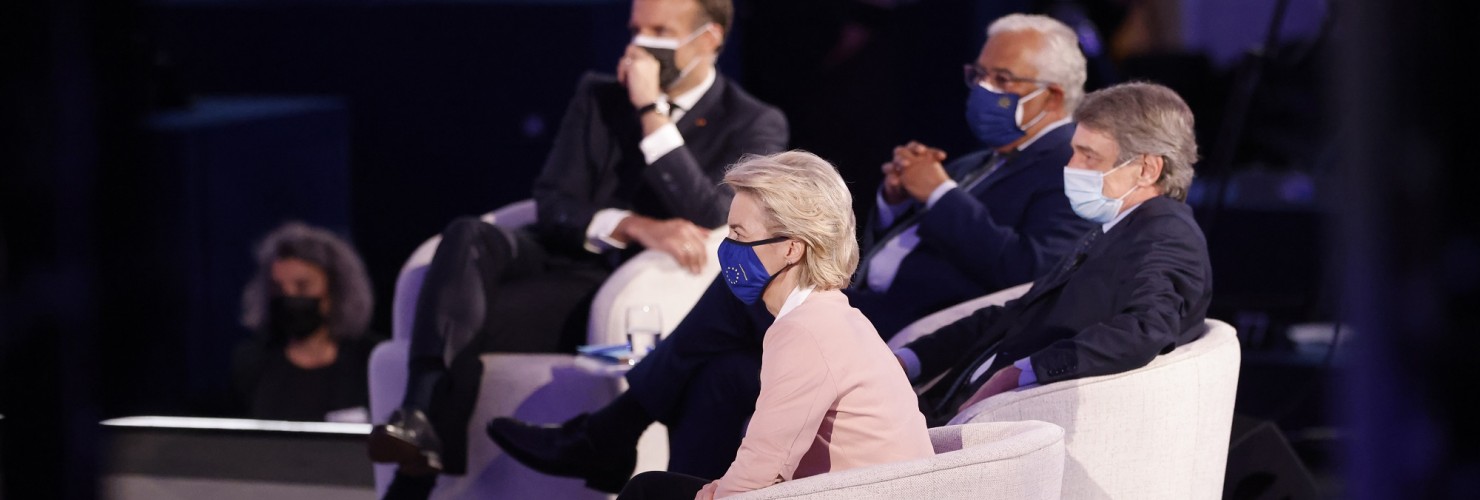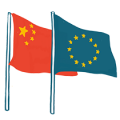

Technocratic mitigation – The European way of managing the China challenge
The EU’s policy towards China may come across as contradictory. But fine-tuning is taking place, and the outcome may well be a more assertive Europe, says Grzegorz Stec.
A year ago, EU High Representative Josep Borrell famously remarked that in managing its relationship with China the EU ‘should be like Frank Sinatra’ and pursue ‘my way’. Borrell’s comment captured the EU’s commitment to its unique approach to China policy. It focuses on the practice of ‘technocratic mitigation’, through which the EU attempts to tackle specific challenges posed by China without pursuing an outright political confrontation. The increasing external and internal tensions are making this approach harder to sustain, but its guiding principles are likely to remain in place, given that they are firmly rooted in the bloc’s institutional design and geopolitical position.
Yet the last few months have tested the European way of engaging China to the point of prompting observers to wonder whether a coherent European China policy even exists, as expressions of increased European assertiveness have been frequently followed by counterbalancing actions.
The tit-for-tat imposition of sanctions in March and the European Parliament’s decision in May to freeze political discussions on the ratification of the Comprehensive Agreement on Investment were balanced by de-escalation attempts by Berlin and Paris, as well as signals of support for the agreement from Madrid, Dublin and other capitals. Moreover, Lithuania’s departure from the 17+1 China–Central and Eastern Europe (CEE) initiative was followed by expressions of support for China–CEE cooperation from Ljubljana, Zagreb, Budapest and Warsaw, obtained by Beijing through a diplomatic counteroffensive.
Factors behind European China policy
The term ‘European China policy’ is ambiguous from the outset. It blends the policies pursued by European institutions within the scope of their competencies with the coordination of member states’ independent and often diverging China policies.
But underneath the somewhat convoluted political messaging, the common objective is to address systemic challenges posed by Beijing through technical, theoretically country-neutral instruments, rather than targeted political actions. It is about countering specific undesirable behaviors or actions rather than countering China as such.
The theoretical baseline of the European position on China remains the EU–China Strategic Outlook from March 2019, which defined China as a ”cooperation partner, economic competitor, and a systemic rival”. But although it underscored how the EU sees China in a multifaceted way and proposed 10 concrete actions, it did not offer clear strategic guidelines on how the EU should manage the tensions underpinning the multifaceted relationship in practice.
In practice, the way Europe approaches China is shaped by three key factors. First, the division of competencies between EU institutions and member states implies that European China policy will be at its most united and efficient in economic and technical areas, where Brussels enjoys the greatest control. Conversely, political aspects of China policy remain limited by the requirement for unanimous support from European capitals. The recent blocking of a common European position on Hong Kong electoral system reforms by Hungarian vetoes shows the extent of this institutional constraint.
Secondly, the EU’s attempts to balance economic considerations, normative principles and commitment to upholding international law are becoming increasingly complex. The Chinese market remains highly appealing for European companies, with 60% of members of the EU Chamber of Commerce in China planning to expand their China operations and some even contemplating localizing their supply chains in China. Simultaneously, China’s authoritarian direction and increasingly confrontational diplomatic style has resulted in tougher language being deployed by the EU. This led to the decision to deploy the European Human Rights Sanctions Regime instrument over human rights violations in Xinjiang, and is particularly visible in the actions of European lawmakers, with the Belgian, Czech, Dutch, Italian and Lithuanian parliaments issuing dedicated resolutions on Xinjiang.
Finally, the EU’s approach to China is intertwined with its ambition of enhancing its strategic autonomy and mitigating the risks related to over-reliance on other international actors. Amid the China–US geopolitical competition, this translates into pursuing non-equidistant relations by enhancing and revising the conditions of partnership with the US, while attempting to avoid alienating China.
The logic of technocratic mitigation
These factors inform the European way of managing the relationship with China, which is operationalized through a policy toolbox developed by the European institutions. It includes a range of instruments allowing the EU to mitigate the risks and confront the challenges posed by China, falling under the following aims:
- Protect the Single Market and European companies – anti-foreign subsidies instrument; international procurement instrument; anti-coercion instrument; Comprehensive Agreement on Investment.
- Mitigate security risks – the EU’s 5G toolbox; investment screening mechanism; review of critical supply chains as part of the industrial policy update.
- Uphold European values – supply chains due diligence mechanism; export controls mechanism; human rights sanctions regime.
Technical solutions that do not explicitly target China help the bloc to minimize the risks of a political backlash from Beijing, which could result in economic costs. For instance, the 5G toolbox provided member states with a framework to introduce risk-mitigation telecoms regulations without singling out Chinese providers (although Sweden ). But Beijing is far less willing to compartmentalize politics and economics when confronted with political pressure. This was shown by the case of European companies such as Swedish fashion brand H&M being targeted in China following the deployment of the human rights sanctions regime in the context of abusive Chinese policies towards Uyghurs in Xinjiang. That is why assertive and more political moves are followed by counterbalancing de-escalatory actions by European capitals. A similar approach of avoiding a full-scale political confrontation with Beijing also extends to the EU’s coordination with external partners on China.
Fine-tuning ahead
But the pressure to adjust European China policy has been intensifying.
Externally, the Biden administration has been mounting diplomatic pressure on Europe to endorse the idea of a counter-China democratic coalition. The EU has been cautiously engaging with such a framework, sharing its transatlantic partner’s concerns, but not necessarily agreeing on the means of addressing them. But even if the EU adheres to an approach focusing on technocratic instruments, such instruments may be challenged by China’s expanding legal toolbox, which recently saw the addition of an Anti-Sanctions Law. This presents companies operating in both China and the West with the possibility that if they comply with Western-mandated sanctions on China, they could face serious sanctions in China.
Internally, both the review of the Strategic Outlook issued by the European Commission and the new EU–China strategy currently being developed by the European Parliament exhibit the ongoing discussion on adjusting European China policy. At the same time, the upcoming elections in Germany and France could lead to a shift in thinking on China in the biggest European capitals, providing the political energy necessary for change to happen.
The adjustment of the European approach to China is more likely to take the form of fine-tuning rather than remodeling. Without institutional changes that bring more competencies to the EU level, European China policy will remain reliant on the shifting political sentiments of member states that in most cases do not have their own China strategies in place.
Still, even a slight adjustment in its trajectory could lead Europe to quite a different destination in the long run. And the scale seems to be tipping towards the assertive end.
This is an abridged version of an article that was first published on the website of the Royal United Services Institute RUSI.org on July 6, 2021.

